Thymine
Synonym(s):2,4-Dihydroxy-5-methylpyrimidine;5-Methyluracil;Thymine
- CAS NO.:65-71-4
- Empirical Formula: C5H6N2O2
- Molecular Weight: 126.11
- MDL number: MFCD00006026
- EINECS: 200-616-1
- SAFETY DATA SHEET (SDS)
- Update Date: 2025-12-22 18:23:36
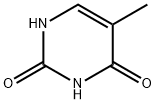
What is Thymine?
Chemical properties
White, crystalline powder. Slightly soluble in hot water; insoluble in coldwater, alcohol; sparingly soluble in ether; readily soluble in alkalies.
The Uses of Thymine
Thymine is a nitrogenous base component in the nucleic acid of DNA.
The Uses of Thymine
A nucleobase found in deoxyribonucleic acids (DNA).
The Uses of Thymine
Thymine (Zidovudine EP Impurity C) is a nitrogenous base component in the nucleic acid of DNA.
What are the applications of Application
Thymine is a nucleobase found in deoxyribonucleic acids (DNA)
Definition
ChEBI: A pyrimidine nucleobase that is uracil in which the hydrogen at position 5 is replaced by a methyl group.
Definition
A nitrogenous base found in DNA. It has a PYRIMIDINE ring structure.
Definition
thymine: A pyrimidine derivativeand one of the major componentbases of nucleotides and the nucleicacid DNA.
Synthesis Reference(s)
The Journal of Organic Chemistry, 25, p. 149, 1960 DOI: 10.1021/jo01071a612
General Description
Thymine (Zidovudine Related Compound C) is a process related impurity of antiretroviral drug zidovudine. Zidovudine belongs to the class of drugs known as nucleoside reverse transcriptase inhibitors and is generally used in the prevention and treatment of HIV/AIDS.
Pharmaceutical secondary standards for application in quality control, provide pharma laboratories and manufacturers with a convenient and cost-effective alternative to the preparation of in-house working standards.
Biochem/physiol Actions
Thymine used in studying DNA structure byirradtaion methods leading to cross-linking reactions and derivitizations. Thymine dimers are indicative of DNA damage. Thymine is used with metal (mercury) to form thymine?HgII?thymine (T?HgII?T) duplexes. Thymine starvation in bacteria leads to halt in DNA synthesis and is referred as thymine-less death.
Purification Methods
Crystallise thymine from EtOAc, 10% aqueous EtOH or water. It has m 318-320o after sublimation at 200o/12mm. Purify it by preparative (2mm thick) TLC plates of silica gel, eluting with ethyl acetate/isopropanol/water (75:16:9, v/v; RF 0.75). The desired spot is localated with a uv lamp, cut the band from the plate, place it in MeOH, shake and filter it through a millipore filter, then evaporate. [Infante et al. J Chem Soc, Faraday Trans 1 68 1586 1973, Beilstein 24 H 353, 24 I 330, 24 II 183, 24 III/IV 1292.]
Properties of Thymine
| Melting point: | ~320 °C (dec.) (lit.) |
| Boiling point: | 234.21°C (rough estimate) |
| Density | 1.3541 (rough estimate) |
| refractive index | 1.5090 (estimate) |
| storage temp. | Sealed in dry,Room Temperature |
| solubility | DMSO (Slightly), Methanol (Slightly, Heated) |
| form | Powder |
| pka | 9.94(at 25℃) |
| color | White |
| Water Solubility | Soluble in hot water. Slightly soluble in alcohol. |
| Decomposition | 335 °C |
| Merck | 14,9398 |
| BRN | 607626 |
| Stability: | Stable. Incompatible with strong oxidizing agents. |
| CAS DataBase Reference | 65-71-4(CAS DataBase Reference) |
| NIST Chemistry Reference | Thymine(65-71-4) |
| EPA Substance Registry System | Thymine (65-71-4) |
Safety information for Thymine
| Signal word | Warning |
| Pictogram(s) |
 Exclamation Mark Irritant GHS07 |
| GHS Hazard Statements |
H315:Skin corrosion/irritation H319:Serious eye damage/eye irritation |
| Precautionary Statement Codes |
P280:Wear protective gloves/protective clothing/eye protection/face protection. P302+P352:IF ON SKIN: wash with plenty of soap and water. P305+P351+P338:IF IN EYES: Rinse cautiously with water for several minutes. Remove contact lenses, if present and easy to do. Continuerinsing. P332+P313:IF SKIN irritation occurs: Get medical advice/attention. P337+P313:IF eye irritation persists: Get medical advice/attention. |
Computed Descriptors for Thymine
| InChIKey | RWQNBRDOKXIBIV-UHFFFAOYSA-N |
Thymine manufacturer
New Products
4,4-Difluoropiperidine hydrochloride tert-butyl 9-methoxy-3-azaspiro[5.5]undecane-3-carboxylate Indole Methyl Resin N-Isopropylurea N,N-Dicyclohexylcarbodiimide(DCC) MELDRUMS ACID 5-METHYLISOXAZOLE-4-CARBOXYLIC ACID Magnessium Bis glycinate Zinc ascorbate 1-bromo-2-butyne 2-acetamidophenol 9(10H)-anthracenone Erythrosin B, 4-Piperidinopiperidine 2-((4-morpholinophenylamino) (methylthio) methylene) malononitrile 2,4-dihydroxybenzaldehyde 3-(4-morpholinophenylamino)-5-amino-1H-pyrazole-4-carbonitrile Methyl 2-methylquinoline-6-carboxylate 2,6-dichloro-4-nitropyridine 4-Bromo-2-chlorobenzonitrile 2-(benzylamino)acetic acid hydrochloride 4-(tert-Butoxycarbonylamino)but- 2-ynoic acid 3,4-dihydro-2H-benzo[b][1,4]dioxepine 1-Phenyl-1-cycloprppanecarboxylicacidRelated products of tetrahydrofuran
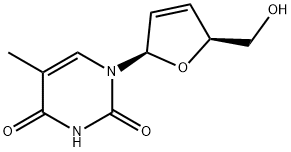
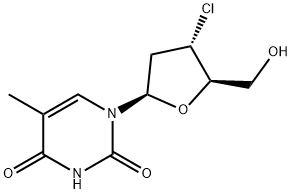
![5,5'-Bis(2-(4-(benzo[d]isothiazol-3-yl)piperazin-1-yl)ethyl)-6,6'-dichloro-3-hydroxy-3,3'-biindoline-2,2'-dione](https://img.chemicalbook.in/CAS/20150408/GIF/1303996-68-0.gif)
![6-Methyl-2-(4-methylphenyl)imidazol[1,2-a]-pyridine-3-acetic acid](https://img.chemicalbook.in/CAS/GIF/189005-44-5.gif)


![6-[[3-[4-(2-Methoxyphenyl)-1-piperazinyl]propyl]amino]-1,3-dimethyluracil](https://img.chemicalbook.in/CAS/GIF/34661-75-1.gif)
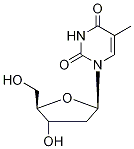
You may like
-
 Thymine 98% CAS 65-71-4View Details
Thymine 98% CAS 65-71-4View Details
65-71-4 -
 Thymine CAS 65-71-4View Details
Thymine CAS 65-71-4View Details
65-71-4 -
 Thymine extrapure CAS 65-71-4View Details
Thymine extrapure CAS 65-71-4View Details
65-71-4 -
 Thymine CAS 65-71-4View Details
Thymine CAS 65-71-4View Details
65-71-4 -
 THYMINE For Biochemistry CAS 65-71-4View Details
THYMINE For Biochemistry CAS 65-71-4View Details
65-71-4 -
 Zidovudine Related Compound C CAS 65-71-4View Details
Zidovudine Related Compound C CAS 65-71-4View Details
65-71-4 -
 Thymine(Zidovudine Related Compound C) CAS 65-71-4View Details
Thymine(Zidovudine Related Compound C) CAS 65-71-4View Details
65-71-4 -
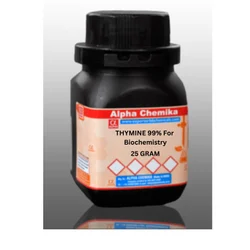 Alpha chemika THYMINE 99% For BiochemistryView Details
Alpha chemika THYMINE 99% For BiochemistryView Details
65-71-4
